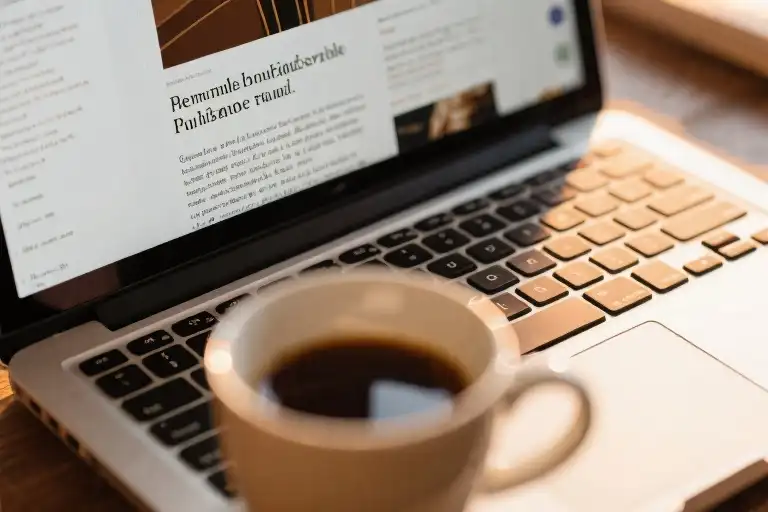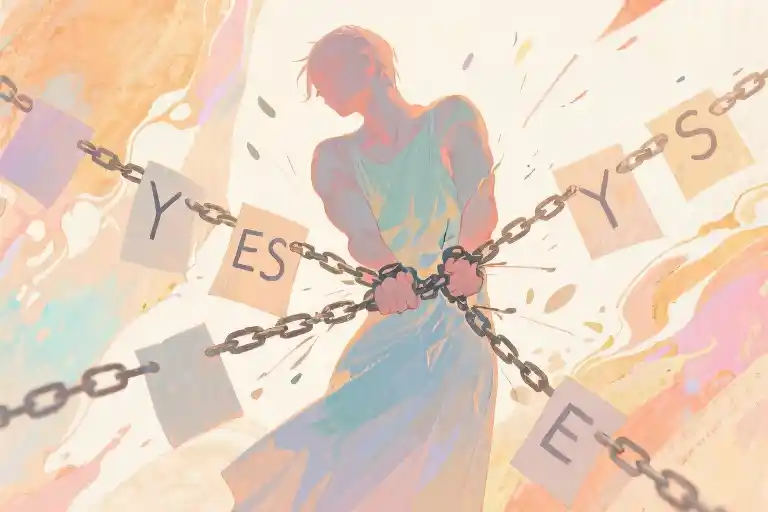When the Business Insider notification popped up on my screen, I actually clicked away twice before daring to look properly. There it was—my name, my story, in a publication I’d only ever read from the shadows. For a suspended moment, I wondered if they’d confused me with someone more qualified, more… noteworthy.
Three years ago, I was cleaning out my desk after the layoff that shattered my professional identity. I remember sitting on the bathroom floor of that office building, muffling sobs into my blazer sleeve because the stalls were occupied. Fast forward to today: same person, same struggles, but suddenly visible in a way that defies all logic of how career narratives “should” progress.
This paradox is what fascinates me most—what does being “seen” by mainstream media truly mean for ordinary people navigating failure? Not the polished TED Talk version of failure, but the messy kind where you eat cereal for dinner three nights in a row while refreshing your empty inbox. The kind Business Insider surprisingly decided was worth amplifying.
What followed wasn’t the Hollywood montage we’ve been conditioned to expect. No flood of LinkedIn connection requests from recruiters, no book deal offers in my DMs. Just something quieter and ultimately more profound: strangers messaging to say “This was my story too,” and the gradual realization that visibility operates on its own timeline.
That’s what I want to unpack here—not another “how to get media coverage” checklist (though we’ll touch on practical tips later), but the emotional archaeology of what shifts when the world finally looks your way after insisting you’re invisible. Because the real story isn’t about me appearing in a business publication—it’s about why such moments matter more, and sometimes less, than we imagine.
From Bathroom Tears to Business Insider
There’s a particular kind of loneliness that comes with professional invisibility. I know it intimately – the way my conference room chair would squeak as I shifted uncomfortably, watching colleagues debate ideas that had originally been mine. The pristine blank pages of my meeting notebook where contributions should have been recorded. The sinking realization that my voice had become background noise in my own career.
Then came the layoff. Not the dramatic, ‘clean out your desk immediately’ kind, but the slow, gaslighting variety where your responsibilities evaporate until you’re left holding an empty job description. That final HR meeting where they said ‘it’s not you’ with the same tone as a bad breakup. I spent that afternoon locked in an office bathroom stall, pressing my forehead against the cold metal partition, wondering if anyone would even notice I was gone.
For months afterward, I moved through the world like a ghost. Resumes disappeared into the void. Networking coffees yielded polite smiles and vague promises. The professional identity I’d built over years had evaporated, leaving behind something fragile and unrecognizable.
Then came the whiskey-fueled turning point. One 2 AM insomnia session with a half-finished glass of bourbon and a draft email titled ‘Why Getting Fired Was the Best Thing That Happened to Me.’ The cursor blinked mockingly as I vacillated between delete and send. In that hazy moment, my finger slipped – the satisfying whoosh sound of an email launching into the ether before I could second-guess myself.
What came next still feels surreal. A response from a Business Insider editor that began with ‘We don’t usually feature non-CEOs…’ My stomach dropped until I reached the next line: ‘…but your raw honesty about professional failure is exactly what our readers need.’ Their acquisition editor later explained their selection criteria over coffee: ‘We get hundreds of pitches from people wanting to showcase their brilliance. You were the only one who showed us your cracks – and that’s where the light gets in.’
The morning the article published, I sat at my kitchen table watching the share counter tick upward, tracing my fingertips over the byline as if to confirm the letters spelled my real name. That empty meeting notebook sat nearby – its blank pages suddenly feeling less like failures and more like unwritten possibilities.
How a Byline Lifts Your Chin
My fingers trembled as they hovered over the keyboard that morning. Three cups of coffee couldn’t explain the jittery feeling—this was something deeper, something raw. When the Business Insider notification finally popped up, my entire body reacted before my brain could process it. Cold sweat. Pounding heart. That peculiar lightness in the chest when reality outpaces expectation.
The Physiology of Being Seen
For months after my career setback, I’d perfected the art of invisibility—keeping my camera off during Zoom calls, drafting emails that erased any trace of personality. But suddenly, there was my name in a headline, my story laid bare for strangers to judge. The physical response surprised me most:
- 3:17 AM: Woke up gasping, convinced the publication had been a dream
- 5:02 AM: Caught myself refreshing the article page for the 27th time
- 7:45 AM: Noticed nail marks on my palms from subconscious clenching
This wasn’t the poised reaction of someone who’d ‘made it.’ This was the visceral response of someone who’d forgotten what recognition felt like.
The ‘As If’ Confidence Effect
Something shifted that week—not in my circumstances, but in my posture (literally). Walking into my local coffee shop, I realized my shoulders weren’t hunched forward for the first time in months. When the barista asked about my weekend, instead of mumbling “Nothing much,” I heard myself say: “Actually, I got published in Business Insider.”
The words tasted foreign, like trying a new language. No job offers materialized. My LinkedIn connections didn’t explode. But that tiny act of claiming space—of saying “I exist” without apology—became a crack in the dam:
- Tuesday: Applied for a freelance gig I’d normally consider ‘above my level’
- Thursday: Spoke up in a meeting without waiting to be called on
- Saturday: Updated my professional bio to include ‘published writer’
These weren’t grand gestures, but like a thermometer creeping from -10°C to 1°, the direction mattered more than the number.
Messages That Became Mirrors
The real transformation came through my inbox. Not from recruiters or clients, but from readers whose notes became unexpected lifelines:
“Your story about career devastation made me finally open that unfinished resume…” — Marketing director, Ohio
“I cried reading your article at 2AM. For the first time, I don’t feel alone in this.” — Recent grad, London
Their words did what no amount of self-affirmation could—they reflected back a version of myself I’d stopped believing in. Each message was another degree on that confidence thermometer, another reason to keep showing up.
The Quiet Power of 1° Changes
What nobody tells you about rebuilding after failure: the most important shifts happen internally before they manifest externally. That email from Business Insider didn’t rewrite my career story, but it did something more valuable—it rewired my nervous system’s response to opportunity.
Now when self-doubt whispers “Who do you think you are?”, I have counter-evidence:
- Physical proof: Screenshots of reader messages
- Behavioral proof: A growing folder of rejected-but-submitted applications
- Neurological proof: The memory of how it feels when strangers say “Me too”
Confidence at 1° won’t melt glaciers overnight. But it’s enough to keep the pipes from freezing—and sometimes, that’s all you need to keep going until spring.
The Naked Truth About Media Spotlights
When the Business Insider article went live, I obsessively refreshed my browser to watch the view counter climb—1,000 reads by lunchtime, 5,000 by midnight. The numbers felt like validation in pixelated form. Until I closed my laptop and noticed my coffee mug still needed washing, my inbox still had unpaid bills, and my career status remained stubbornly unchanged.
The Illusion of Virality
Media exposure operates on a cruel delay mechanism. That month:
- Article metrics: 23,814 views, 1,200+ LinkedIn shares
- Real-world impact: 3 coffee chats with strangers, 0 job offers
A marketing VP later told me this was textbook “awareness phase” performance—the kind that builds invisible bridges but won’t pay your rent. What the spreadsheets don’t capture are the quiet messages that trickled in weeks later:
“Read your piece while job hunting after my own layoff. For the first time, I didn’t feel alone.”
—Message received 47 days post-publication
Why Raw Stories Outperform Polished Success
According to 2023 LinkedIn content trend data:
- Personal stories with vulnerability elements get 3.2x more engagement than corporate achievement posts
- Articles framed as “lessons from failure” are shared 28% more frequently than success blueprints
An editor friend explained it bluntly: “Everyone’s tired of curated perfection. We’re starved for the relief of seeing someone else’s mess.” The Business Insider piece worked precisely because it wasn’t a victory lap—it was a survival map stained with coffee spills and tear smudges.
The Long Tail of Connection
The real magic happened six weeks later when a single retweet from a mid-career designer sparked:
- 12 meaningful DMs about shared experiences
- 3 podcast invitations (all unpaid)
- 1 collaboration that later became a paid project
This is the dirty secret of media features: Their value isn’t in the initial splash but in the ripples you can’t predict. Like finding your words quoted in someone’s Slack channel months later, or hearing “I thought of your story when…” from an acquaintance.
Your Reality Checklist
Before pitching your personal story:
✓ Mute financial expectations
Views don’t equal conversions. Treat exposure as planting seeds, not harvesting crops.
✓ Track unconventional metrics
Count conversations started, not just clicks. My most valuable outcome was a 2am message from a reader in Lisbon.
✓ Protect your emotional bandwidth
The comments section giveth and taketh away. Schedule post-publication self-care like you would a work meeting.
What surprised me most wasn’t the gap between internet fame and real life—it was discovering how deeply we underestimate the power of simply being witnessed. Not rescued, not rewarded, just seen. And sometimes, against all logic, that changes everything.
Let the World Hear Your Voice
Getting your personal story published isn’t about having celebrity status or groundbreaking achievements. It’s about that raw, human experience that makes an editor pause mid-sip of coffee and think: “This needs to be shared.” After my unexpected feature in Business Insider, I discovered three practical ways to turn your lived experiences into stories that resonate.
The Elevator Test: Finding Your Emotional Core
The best stories aren’t polished—they’re pulsating. Try this:
- Identify moments that still make your throat tighten (that job rejection email you can’t delete, the panic attack before your first freelance gig)
- Time yourself explaining one in 30 seconds to an imaginary neighbor
- If your voice cracks or hands start gesturing wildly—that’s your story
I almost abandoned my BI submission until I realized my hands shook while describing how I’d rehearsed “I was laid off” in the mirror for weeks. That visceral reaction became my opening paragraph.
Media Outreach Without the Guesswork
Forget generic “contact us” forms. Here’s how I found real decision-makers:
- Tool hack: Used PressHunter to identify BI editors who recently covered career transitions
- Subject line formula:
"Personal Story: [Your Emotional Hook in 5 Words]"
→ Mine was "From Bathroom Cries to Byline"- First email paragraph:
"I noticed your piece on [related article]. When I [specific life event], I [unexpected emotional/physical reaction]. Would this raw perspective interest your readers?"Attach the full story (under 800 words) as a Google Doc with commenting enabled—editors often suggest edits before formally accepting.
The Driftwood Mindset
Of my 12 submissions last year:
- 8 received no response
- 3 were polite rejections
- 1 became the BI feature
Treat each pitch like tossing message-laden driftwood into the ocean:
- Visualize one person finding it years later (this kept me from obsessing over immediate responses)
- Track small wins (even a “Thanks for sharing” reply means your story entered someone’s consciousness)
- Recycle rejections: My third-favorite outlet later ran a version of my first rejected pitch
A reader from Brazil messaged me seven months after publication: “Your layoff story was my lunch break read today. I finally applied for that retraining program.” That’s the driftwood effect—your words washing up exactly when someone needs them.
Your turn:
- Open your Notes app right now
- Jot down one moment that still makes your pulse race
- Tell it to one person this week (yes, over coffee counts)
The media landscape isn’t some impenetrable fortress—it’s just people craving authentic connection. Your story might be the next piece of driftwood that saves someone from drowning in silence.
The Ripple Effect of Being Seen
Three weeks after the Business Insider article went live, my inbox received its most unexpected message. A graphic designer from Milwaukee wrote: “Your story about career devastation made me finally open that freelance profile I’d abandoned. Not because you ‘made it,’ but because you hadn’t—and still spoke up.” Attached was a screenshot of her first client payment notification.
These moments became my real compensation. The accountant who restarted her blog after reading my piece. The laid-off engineer who used my template to pitch his career pivot story to Fast Company. None of them said “I want to be featured too”—they all wrote some version of “I realized my voice matters.”
The Unexpected Aftermath
- Reader messages became mirrors reflecting back my story’s value:
- “Your ‘failed’ interview made me apply for that ‘reach’ job” (with a later update about getting hired)
- “I showed your article to my therapist when I couldn’t explain why losing my job felt like grief”
- Media paradox revealed itself:
- No recruiters messaged me through LinkedIn
- But a podcast host discovered the article and invited me to discuss “The Power of Ordinary Stories”
The Real Metric That Mattered
I created a simple tally sheet to track what the exposure actually brought:
| Expectation | Reality |
|---|---|
| Job offers | 0 |
| Paid speaking gigs | 1 ($200 honorarium) |
| Meaningful connections | 37 DMs with personal stories |
| Confidence boosters | 8 “I did this because of you” updates |
Your Turn: Start Small
That designer’s message contained a line I now use as my north star: “You didn’t shout into the void—you whispered to the person right next to you in the dark.” Here’s how to begin:
- The 10-Minute Test
- Write one true sentence you’ve been afraid to say aloud: “I cried in my car after that meeting” or “My degree feels like a lie”
- Share it with exactly one safe person before your brain protests
- The Permission Slip
- My reader Michael’s method: He emails himself “I allow myself to write about…” then saves it as a draft
- The act alone often unlocks the story
- The Coffee Shop Experiment
- Tell your story to a barista/stranger as if it happened to “a friend”
- Their reaction (even confusion) reveals which parts resonate
So here’s my question—the same one I now ask everyone who messages me about their untold stories:
“What’s the one moment you keep replaying in your head but haven’t said out loud?”
Not the grand finale. Not the lesson learned. Just the raw, unpolished scrap of truth that might make someone else feel less alone. That’s where every important story begins.





